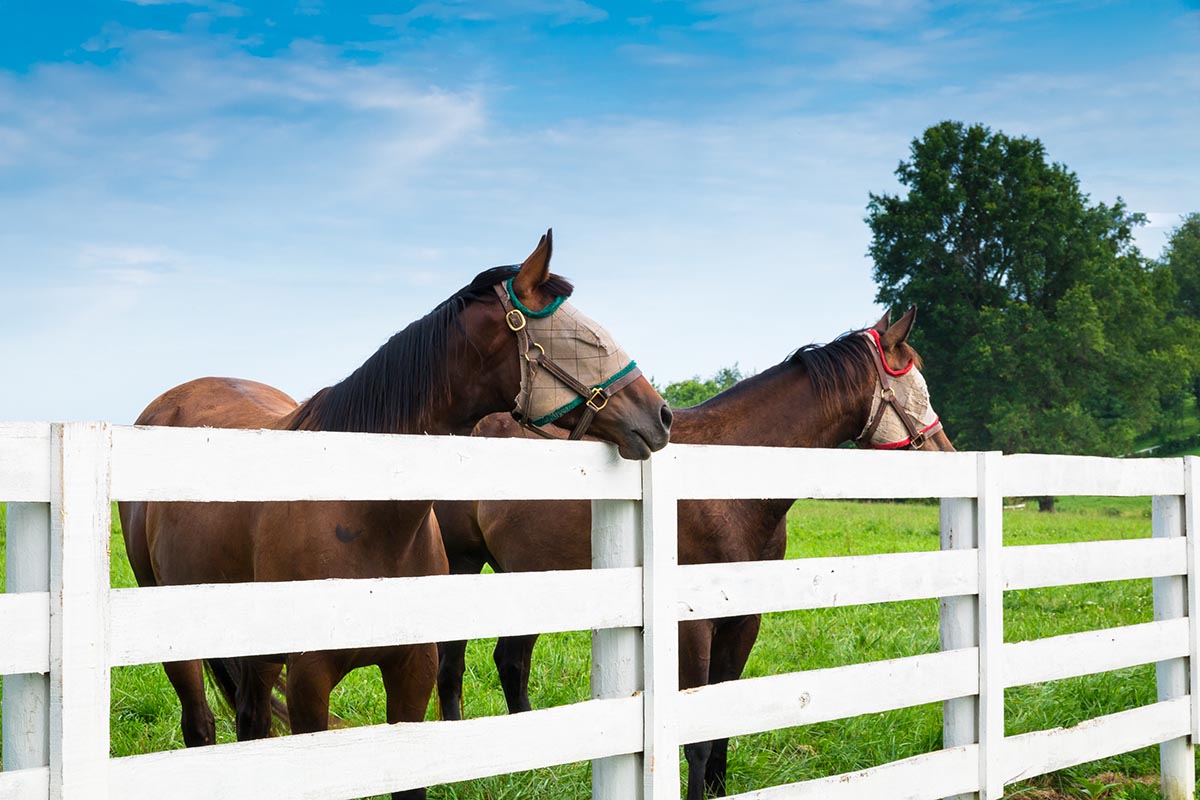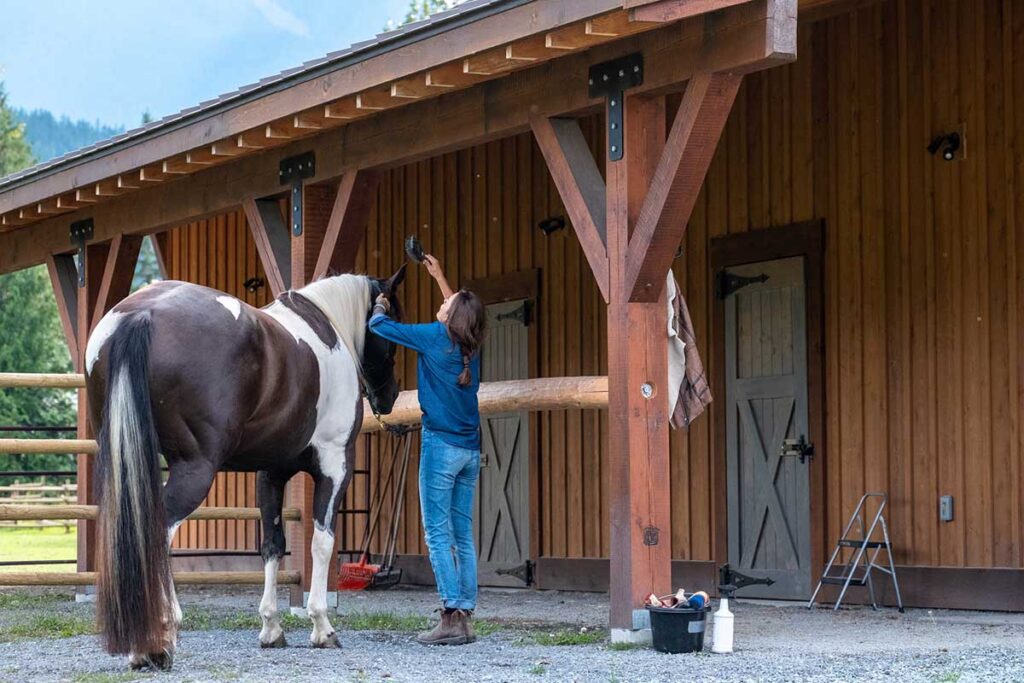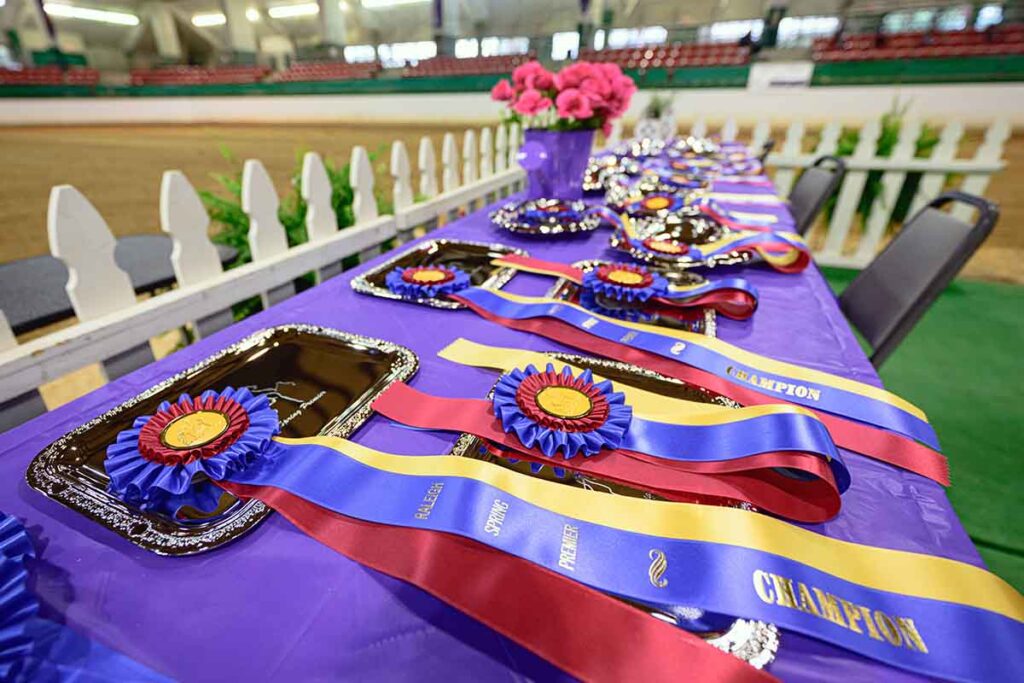If you keep your horse in a pasture all or part of the time, you’ll need good, solid, safe fencing. You can either invest in barrier fencing, which physically keeps your horse contained; electric fencing, which your horse learns to respect after getting zapped; or a combination of the two. Adult geldings and mares need a barrier fence at least 5 feet high; stallions need a fence at least 6 feet high.
Let’s dive into the different types of horse fencing, including materials, maintenance, and costs.
Barrier Fencing
Barrier fencing includes traditional wood; vinyl-coated, pressure-treated wood; hollow vinyl; high-tensile PVC rail; coated, high-tensile wire; high-density monofilament; wire mesh; and steel pipe.

- Traditional wood. A nice, white, post-and-rail (or post-and-board) fence is traditional and attractive but is costly and high maintenance. You’ll need to paint your wood fence often, and repair patches where your horse may have chewed or rubbed. (Note: If you opt for a wood fence, you can add an electric wire to the top rail to keep your horse away.)
- Vinyl-coated, pressure-treated wood. This fencing type looks much like white, plain wood fencing, but actually sports a coat of vinyl. With this coating, you won’t need to paint (and repaint) your fence, and your horse won’t be tempted to chew on or rub against it.
- Hollow vinyl. This fencing type is all vinyl, with no wood core. Like vinyl-coated wood, it looks very much like a traditional wood fence. Although it’s less expensive than wood-based fences (plain or vinyl coated), it’s not as durable-and if it breaks, it can splinter into sharp-edged pieces.
- High-tensile PVC rail. This fencing consists of high-tensile-polymer or PVC rails that enclose 12.5-gauge steel wires. Each strip is attached directly onto pressure-treated or vinyl-coated wood posts and is secured with steel brackets. Your horse will find this fencing as easy to see as wood fencing. However, if he does hit the fence at speed, it’ll “bounce back” or flex on impact, reducing the chance he’ll hurt himself.
- Coated high-tensile wire. With this fencing, 12.5-gauge steel wire is coated with a strong synthetic polymer. This coating makes the wire easier for your horse to see than wire alone-but overall, this fencing has low visibility. Note that this fencing also has a low breaking strength, so if your horse runs through it, it’ll break, rather than hold, for safety’s sake. For this reason (and because of low visibility), high-tensile wire fencing is best when combined with an electric charge (described later).
- High-density monofilament. This fencing is similar to coated high-tensile wire but is made from a synthetic monofilament (nylon or polyester), rather than poly-coated wire.
- Wire mesh. This fencing type consists of 6- to 14-gauge steel wire cables tied into a vertical or diamond pattern. Openings are typically two-by-four inches, preventing your horse from getting a hoof through. Also in this category is 12.5-gauge high-tensile woven-wire fencing, with 3-by-3¾-inch openings. Note: Your horse may not see this fencing type as well as wood and wood-look fencing. Add a white “sight board” on the top, so he doesn’t inadvertently run through the fence-or try to-and become injured.
- Steel pipe. This barrier fencing is made from steel pipe connected to steel posts. Traditionally, steel pipes were welded to posts and made from plain steel, which is prone to rust and corrosion. You can now find pipe fencing made from polymer-wrapped (and/or galvanized), powder-coated steel, which doesn’t rust. Such fencing also needs no welding. Instead, you simply use an Allen wrench to tighten hardware on specially made connectors at each post.
Electric Fencing

Electric fencing tends to be cheaper than barrier fencing, because you use an electric charge to contain your horse, rather than relying solely on a physical barrier, thus reducing the amount of material used. Also, the electric shock discourages your horse from touching the fence, which reduces wear and tear. You can use electric fencing alone or add it to barrier fencing to keep your horse from chewing or rubbing, for additional security, and/or for additional height.
There are several types of electric fencing; here’s a rundown.
- Electric poly-tape. Top-quality electric tape features 10 thick wires woven with polyethylene yarns. Look for poly yarn that’s treated to resist the sun’s ultraviolet rays, which can weaken yarn over time. Invest in a wide tape-1½ to 2 inches-so your horse is sure to see it and doesn’t accidentally run through it at speed.
- Electric braid. This fencing features a polyethylene core encased in polyester fibers. These fibers are braided with copper or stainless steel wires that conduct an electric charge. Electric-braid fencing offers high visibility and will give on impact.
- Electric-coated high-tensile wire. Like coated high-tensile wire (described earlier), this fencing features 12.5-gauge wire covered with polymer. To conduct electricity, metal fibers are added to the polymer coating.
- Electric rope. This fencing is made up of strong polyethylene fibers containing stainless-steel wires that conduct an electric charge. It’s cost effective and low maintenance.
Take-Home Message
Choosing the right type of fencing is essential for your horse’s safety and well-being. Each fence type has its pros and cons, so assess your circumstances and budget and consider factors such as durability, visibility, and maintenance before making a decision. Whether you opt for wooden, vinyl, electric, or a combination of materials, prioritize the safety and security of your horses above all else.
This article originally ran on Horseandrider.com.








